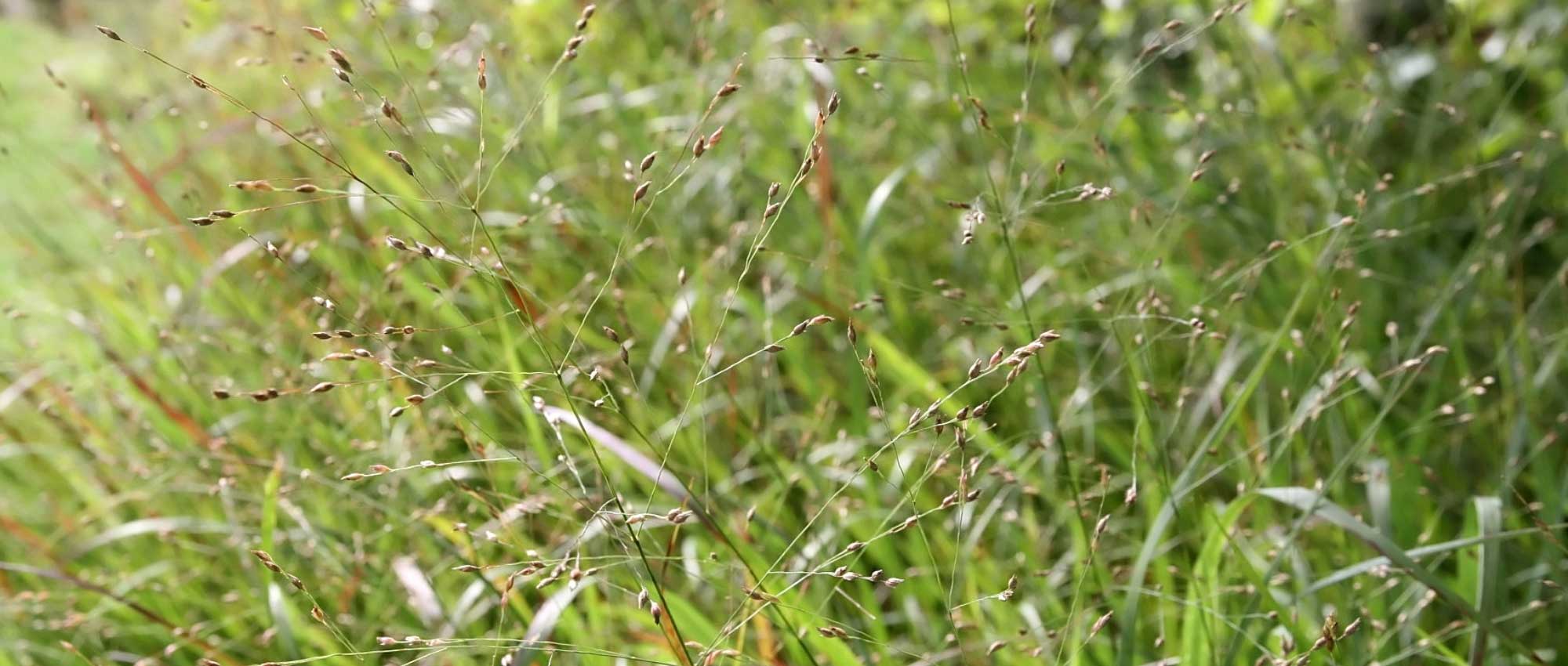
Panicum: planting, growing, dividing and care
Contents
Panicum in a nutshell
- Panicum are grasses prized for their elegant upright, vertical habit
- They produce late-summer flowering in light, very airy panicles
- Their leaves take different colours depending on variety, changing shade over the year
- Perennial plants easy to grow, long-lived and undemanding
- Valuable for adding structure and verticality to borders!
- Interesting plants year-round, even in winter
A Word from Our Expert
Panicum are ornamental grasses prized for upright habit, decorative foliage that takes beautiful autumn colours, and flowering in light, airy panicles. These are highly graphic plants, useful for structuring borders. They remain decorative in garden throughout year, even in winter, when foliage dries and turns brown–yellow while remaining in place.
Most common in cultivation for ornamental qualities is Panicum virgatum, or erect panic. It is available in a wide range of varieties, offering different foliage colours. Some, such as ‘Rotstrahlbusch’, have green leaves tinged with red–purple, while others, such as ‘Dallas Blues’, have blue-tinged foliage.
Panicum prefer sunny positions and ordinary, fairly free-draining soils. They are nonetheless versatile plants, capable of adapting to varied situations. They are easy to grow, require little maintenance and are rarely affected by diseases or pests. They are robust and quite hardy. They can be easily propagated by division.
Description and botany
Botanical data
- Latin name Panicum sp.
- Family Poaceae
- Common name Upright panic
- Flowering between August and October
- Height generally between 1 and 2 metres
- Sun exposure full sun
- Soil type well-drained, fairly ordinary, rather calcareous
- Hardiness between −25 and −30 °C for most varieties
Panicum include more than 440 species of grasses that can be annual or perennial. Most widely cultivated for ornamental value is Panicum virgatum. Through hybridization it has given rise to many varieties, generally offering superb coloured foliage — sometimes bluish, or flushed with red or purple — with tones that tend to intensify in autumn when temperatures fall.
Panicum virgatum is a long-lived perennial native to North America, found from southern United States to Mexico. It grows mainly in meadows, but also at woodland edges, beside roads, sometimes on wet ground and along watercourses.
Most Panicum species originate from tropical regions, but a few species are also naturally present in temperate regions of Northern Hemisphere.
Panicum are ornamental grasses belonging to large family Poaceae (more than 11,500 species), along with meadow or short grass meadow herbs, other ornamental grasses (Pennisetum, Stipa, Festuca…) and cereals. Millet is in fact an annual Panicum (Panicum miliaceum) cultivated as a cereal for food. Likewise, Panicum maximum is often grown as fodder in tropical regions.
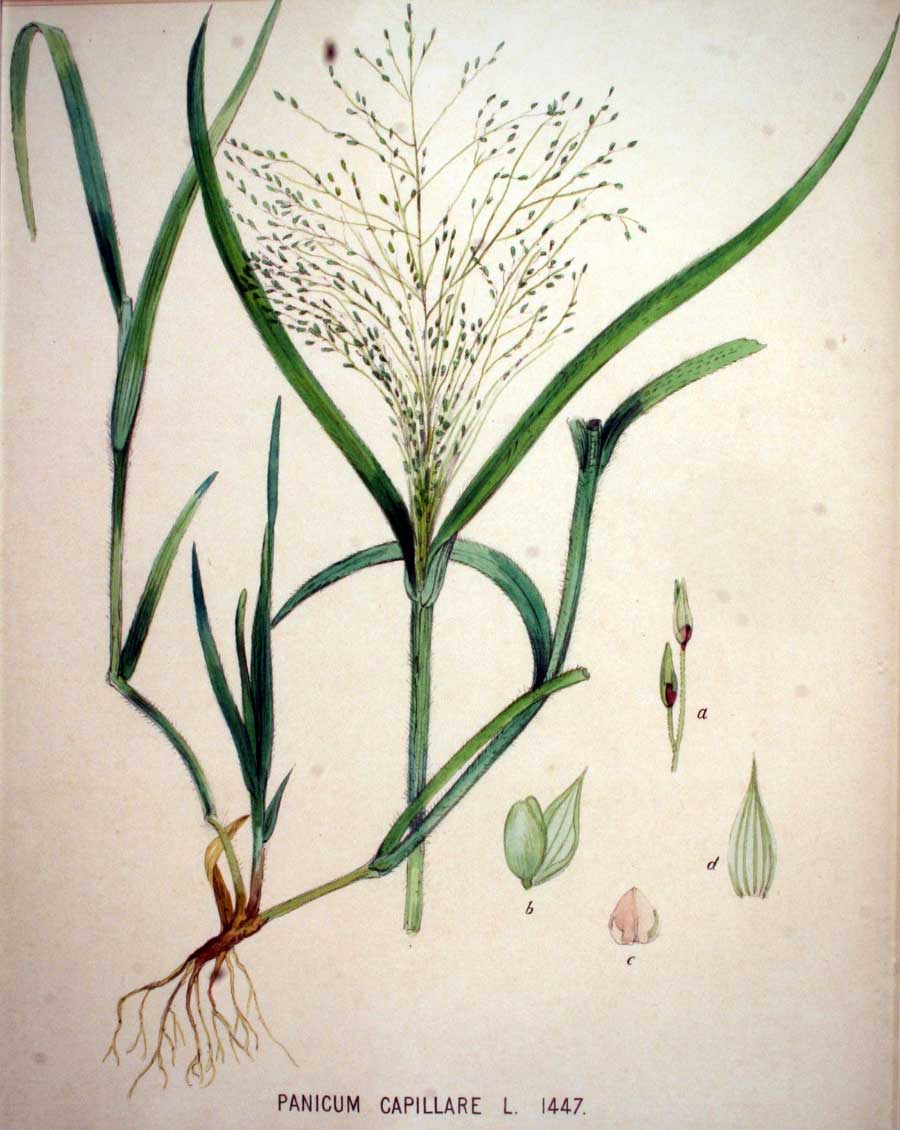
Panicum capillare: botanical illustration
In France, seven Panicum species occur in wild, some native to other parts of world but now naturalized in metropolitan territory. For example, Panicum capillare is an annual species with particularly fine, delicate aspect, originating from North America.
Panicum form dense tussocks of narrow, upright foliage, slightly flared towards top of stems (even more so when plant is in full flower!). Panicum are graphic plants, truly attractive for their upright, airy habit. They are useful to structure borders, bringing movement and lightness. Generally Panicum reach between 1 and 2 metres in height. Some varieties adopt a natural, open habit, while others, such as ‘Northwind’, are distinguished by a straighter, more rigid form. Contrast with vapoury flowering then creates a very pleasing effect. Panicum virgatum is commonly called “Panic érigé”, a reference to its erect, vertical habit.
Panicum starts growth late in spring and develops mainly during summer. Flowering occurs in late summer, between August and October. Delicate inflorescences then open above foliage.
Flowers are gathered in panicles measuring between 40 and 60 cm in length, often with purplish or reddish tints. These panicles are finely branched and have a fragile, very delicate appearance. Inflorescences seem made of tiny beads on very fine threads; stems and branches appear almost as thin as hairs! Panicles are borne at stem tips above foliage, adding height and volume to Panicum tussocks.
Lightness and flexibility of inflorescences allow them to sway in wind, adding movement to borders. Effect is particularly striking when Panicum are planted in large groups.
Panicum are appreciated for very delicate, airy flowering. Panicles consist of a multitude of small spikelets, often purplish, each composed of two flowers: upper flower fertile while lower is sterile. Flowers are tiny, hard to observe with naked eye.
Flowers are wind-pollinated, pollen carried from one plant to another by wind.
Panicum flowering stems can be cut and used in bouquets, bringing volume and lightness and highlighting larger, more colourful flowers (lilies, roses, dahlias, peonies…). They are also suitable for dried arrangements.

Light flowering of Panicum virgatum ‘Rehbraun’ (photo J. Hagstrom) / detail of Panicum virgatum flowers (photo Matt Lavin)
As with many grasses, Panicum leaves are linear, very long and narrow. They generally measure between 40 and 80 cm in length. Central vein is well marked, thick, helping foliage keep an elegant, fairly rigid shape without collapsing. Leaves of ‘Northwind’ are wider than in other Panicum.
Leaves are a real asset for their colours, which vary greatly depending on cultivated variety. Panicum offer real diversity in foliage tones, making it easy to create beautiful colour effects and contrasts in garden. Shades remain soft and natural. In species type, leaves display fresh, bright green. Many varieties show leaves nicely tinged with deep red, notably at leaf tips, creating a beautiful gradient or contrast. Others, such as ‘Dallas Blues’, have blue-grey, slightly metallic foliage. Variety ‘Heiliger Hain’ is notable for superb colours where green and reddish-purple mingle with hints of bluish violet.
Panicum foliage changes colour over time, generally taking very pretty hues in autumn: some varieties then turn yellow or reddish-purple, bright and vivid. These grasses are perfect to compose a fine autumn scene alongside late-flowering plants and other species whose leaves change hue at season end. Panicum colour mainly as temperatures drop approaching winter. Some varieties, such as ‘Kulsenmoor’, then take a vivid red tone, while others, like ‘Dallas Blues’ or ‘Prairie Sky’, retain bluish tones.
With arrival of cold and winter, foliage tussocks dry out and take a pale-brown, straw colour. Plant then enters dormancy and will resume growth in spring. If not cut back, foliage clumps remain in place over winter, allowing plant to retain ornamental interest even in that season. Panicum have advantage of structuring garden in winter too! It is therefore preferable to wait until early spring to prune foliage.

Panicum leaves take very beautiful colours! Panicum virgatum ‘Shenandoah’ (photo Peganum), Panicum virgatum ‘Kulsenmoor’, and Panicum virgatum ‘Squaw’
Root system of Panicum virgatum is fibrous and rhizomatous. Roots penetrate deeply into soil, which likely explains good drought resistance and ability to tolerate poor soils.
In autumn, after flowering, Panicum produce seeds. Panicles remain decorative by shape and become beige; flowers give way to numerous small dry fruits, called caryopses, generally less than 6 mm long. These are indehiscent dry fruits that do not open at ripeness, each containing a single seed. Panicum can self-sow in garden.
Read also
Grasses: which variety to choose?Main varieties of Panicum
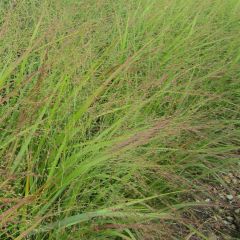
Panicum virgatum Rehbraun - Switchgrass
- Flowering time August, September
- Height at maturity 1,20 m
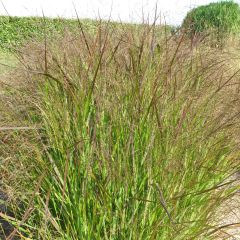
Panicum virgatum Squaw - Switchgrass
- Flowering time September to November
- Height at maturity 1,30 m
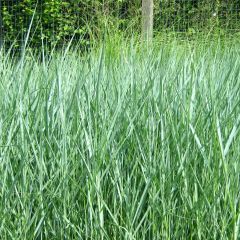
Panicum virgatum Prairie Sky - Switchgrass
- Flowering time September to November
- Height at maturity 1,50 m
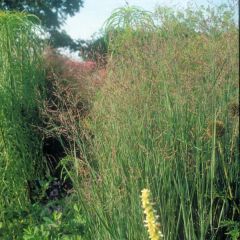
Panicum virgatum Heavy Metal - Switchgrass
- Flowering time September to November
- Height at maturity 1,20 m
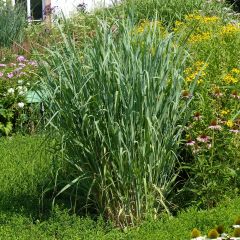
Panicum virgatum Dallas Blues - Switchgrass
- Flowering time September to November
- Height at maturity 1,70 m
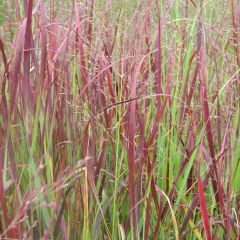
Panicum virgatum Kulsenmoor - Switchgrass
- Flowering time September to November
- Height at maturity 80 cm
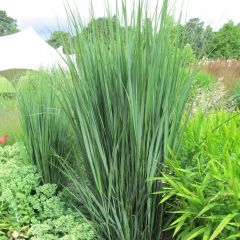
Panicum virgatum Northwind - Switchgrass
- Flowering time September to November
- Height at maturity 1,70 m
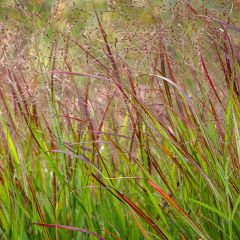
Panicum virgatum Shenandoah - Switchgrass
- Flowering time September to November
- Height at maturity 70 cm
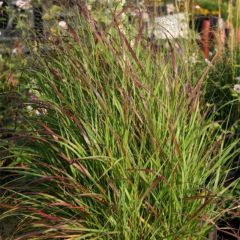
Panicum virgatum Rotstrahlbusch - Switchgrass
- Flowering time August, September
- Height at maturity 1,20 m
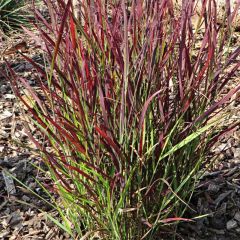
Panicum virgatum Sangria - Switchgrass
- Flowering time September to November
- Height at maturity 45 cm
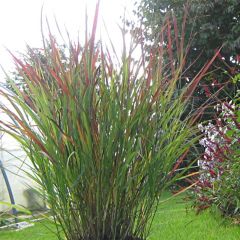
Panicum virgatum Cheyenne Sky - Switchgrass
- Flowering time September to November
- Height at maturity 80 cm
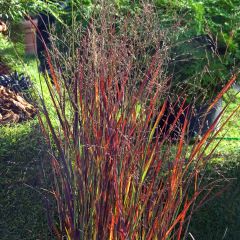
Panicum virgatum Heiliger Hain - Switchgrass
- Flowering time September to November
- Height at maturity 1,20 m
Discover other Panicum
View all →Available in 2 sizes
Available in 0 sizes
Available in 2 sizes
Available in 2 sizes
Available in 2 sizes
Available in 1 sizes
Available in 1 sizes
Available in 2 sizes
Available in 1 sizes
Available in 2 sizes
Planting
Where to plant?
Panicum will thrive in full sun, although planting in partial shade is also possible. However, with maximum sun and light it will develop a better silhouette and more attractive colours!
Panicum is a versatile plant, able to adapt to different situations. It prefers cool, fertile soil, but can also be planted in poor, dry, stony or even sandy soil. Its foliage even tends to take on more attractive tones in this type of substrate. In rich soil, Panicum can tend to spread, while it will adopt a more upright and compact form in poor soil. Most important is to plant it in well-draining soil, where water can easily infiltrate. Panicum also shows a preference for calcareous substrates and likes deep soils.
You can also plant Panicum in a pot, but choose the least bulky varieties (‘Cheyenne Sky’, ‘Kulsenmoor’, ‘Sangria’ …) and a sufficiently large container as these are large grasses with a well-developed, deep root system.
Because Panicum has good hardiness, it can be planted in regions with cold climate. It is also not very sensitive to strong winds and tolerates sea spray well.
Panicum plants are fairly large: do not hesitate to place them at the back of a border, behind lower plants. They will help structure it and provide a natural backdrop that will set off more colourful blooms. We also recommend planting them in groups to create a greater visual impact!
When to plant?
You can plant in spring (April–May) or in autumn (September–October). Best to do so when temperatures are mild, outside periods of frost or extreme heat.
How to plant?
Maintain a planting distance of between 50 cm and 1 m, depending on variety.
- Soak rootball in a basin of water
- While it re-wets, dig a planting hole at least twice the size of the rootball. Loosen soil well to facilitate establishment, as Panicum have roots that penetrate deeply. You can add some gravel or coarse sand to improve drainage, especially if your soil tends to retain water.
- Place plant in the planting hole, then backfill and firm the soil. Avoid burying base of stems, but ensure it sits at same level as in original pot.
- Water generously.
- We recommend applying an organic mulch around the clump (dead leaves, woodchips…).
Continue to water in the weeks following planting, until plant is established and develops its root system.
You can also plant Panicum in a large pot or container, using a well-draining substrate. However, it will require a little more watering and attention than when planted directly in ground. For help: How to grow Panicum in a pot?
You can also consult our advice sheet on planting grasses!
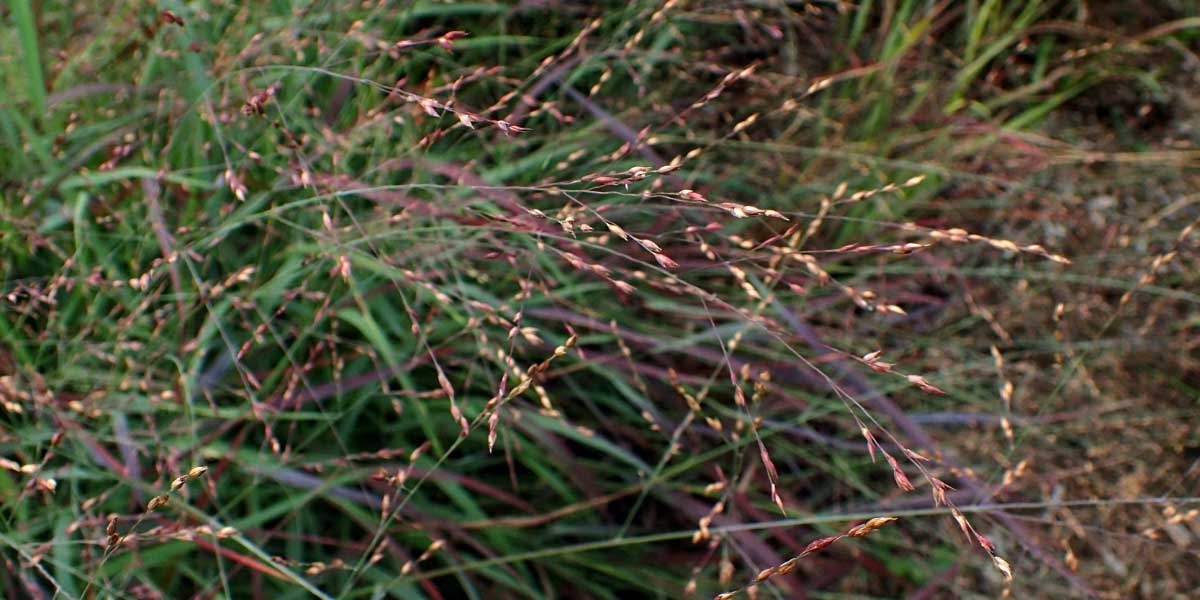
Panicum ‘Cheyenne Sky’ (photo by Krzysztof Ziarnek, Kenraiz)
Read also
Planting grassesCaring for Panicum
Panicum requires very little maintenance: it is an undemanding plant that tolerates drought well. However, it is preferable to water it in the weeks following planting. Likewise, if your plant is in a pot, water it from time to time, as the potting compost dries out faster than in open ground.
As Panicum tolerates poor soils well, they can easily do without fertiliser. They even tend to develop more attractive colours in poor ground. Avoid especially fertilisers too rich in nitrogen, which would encourage vigorous foliage growth and give the plant a less balanced habit.
You can also add mulch around the plant, for aesthetic reasons and to limit weed growth.
Wait until early spring to prune Panicum, because, although it is deciduous, its foliage remains decorative in winter! It should be pruned just before the plant restarts its growth in spring. You can cut the clump back to about 10 centimetres above soil. For more information, read our tutorial: “When and how to prune upright panic-grass or Panicum?“.
Panicum is not very susceptible to diseases and pests. It can occasionally be affected by rust, particularly in warm, humid growing conditions.
→ Learn more in our care sheet : Diseases and pests of ornamental grasses.
Discover our video tips on pruning grasses:
Propagation
To propagate Panicum, as with other grasses, the best technique is to divide clumps. Sowing is nevertheless possible, but takes longer and is more difficult than division. However, it is useful for producing a large number of young plants. It is carried out in spring.
Division of clumps
The best time to divide Panicum clumps is spring, but it is also possible to do so in autumn. Preferably work during mild temperatures, avoiding periods of frost or extreme heat. We recommend dividing every five to six years. Besides obtaining new young plants, this regenerates clumps and restores vigour. Over time, clumps can tend to spread out (especially if plant is in rich soil); division will help maintain a more compact, structured habit.
To divide a young plant of Panicum :
- Start by choosing a well-developed clump, a few years old.
- Dig it up carefully.
- Divide it, using a spade, into several pieces, each bearing a few stems and roots.
- Replant them in another location after preparing the ground.
- Remember to water generously immediately after planting.
We recommend continuing to water in the weeks that follow.
If the clump you want to multiply is particularly large, you can take divisions directly from its outer edge, separating them from the original young plant with a spade, instead of digging up the whole plant.
You can consult our video advice on dividing grasses :
Association
Panicums fit perfectly into naturalistic gardens. Like many grasses, they are invaluable for adding a wild, country, very free feel to borders. Place them with Echinacea, Perovskia, Gaura lindheimeri, Verbena hastata, Achillea, Eupatorium maculatum… Enjoy majestic flowering of teasel, Dipsacus fullonum. Also feel free to add other grasses, such as Pennisetum orientale ‘Tall Tails’, which offers superb white flower spikes with a very soft, light aspect. We recommend favouring plants that bear small, light flowers in fairly natural shades.
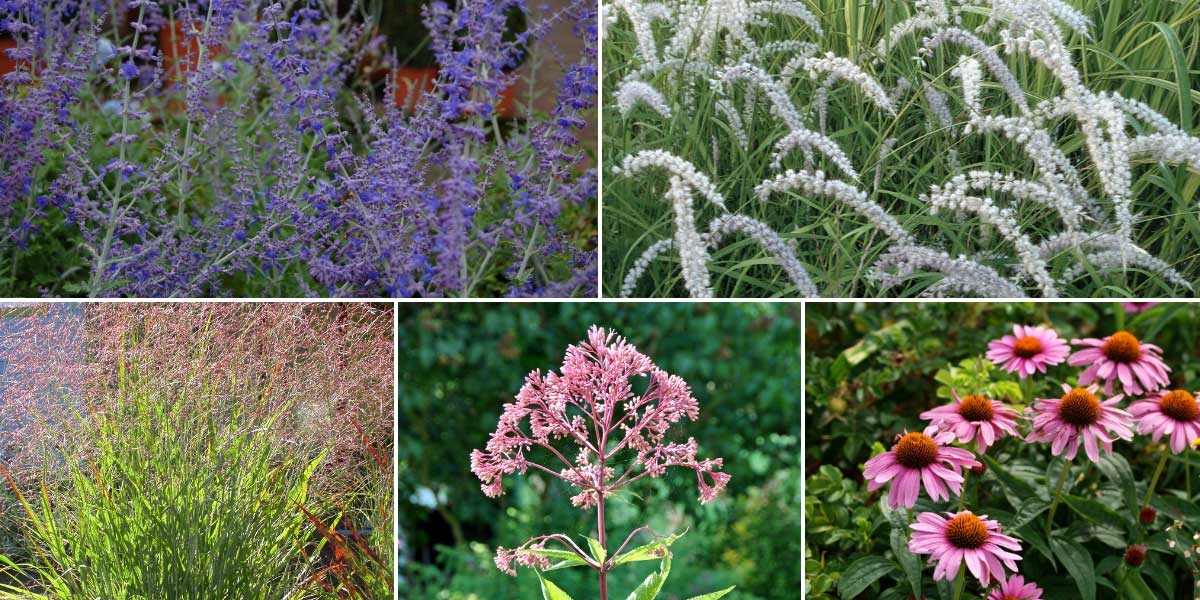
Panicums fit easily into naturalistic gardens. Perovskia ‘Blue Spire’ (photo Andy Mabbett), Pennisetum orientale ‘Tall Tails’, Panicum virgatum (photo Matt Lavin), Eupatorium maculatum (photo Marc Ryckaert) and Echinacea purpurea (photo F.D.Richards)
Use Panicums to create low-maintenance garden with other plants that tolerate drought well and require little attention.
Use Panicums and their very vertical habit to create a modern-style garden. Choose architectural plants: grasses, persicarias, bamboos… and use them to design a border with timeless, restrained and chic appearance, ideal for urban gardens. Favour structural plants valued for their silhouette. You can create striking contrasts, for example by planting Panicums alongside plants with firmer, more compact shapes, such as box or clipped yews, Santolina, Ophiopogon, Hakonechloa macra… Play with forms by placing free, airy plants next to plants with compact, dense foliage! For flowering, choose agapanthus, Cimicifuga, Eremurus, Allium schubertii…
Use Panicums to create a superb autumnal scene. Pair them with other plants whose foliage takes beautiful colours at year’s end: Cornus sibirica, Euonymus alatus, Lagerstroemia, Nandina domestica… You will obtain a blazing border in shades of red, copper, orange, yellow… Also enjoy the superb grass Imperata cylindrica ‘Red Baron’, with foliage tinged bright red. You can also add late-flowering plants, such as asters, dahlias, Colchicum, Persicaria amplexicaulis, Sedum ‘Autumn Joy’, Echinacea, Eupatorium maculatum…
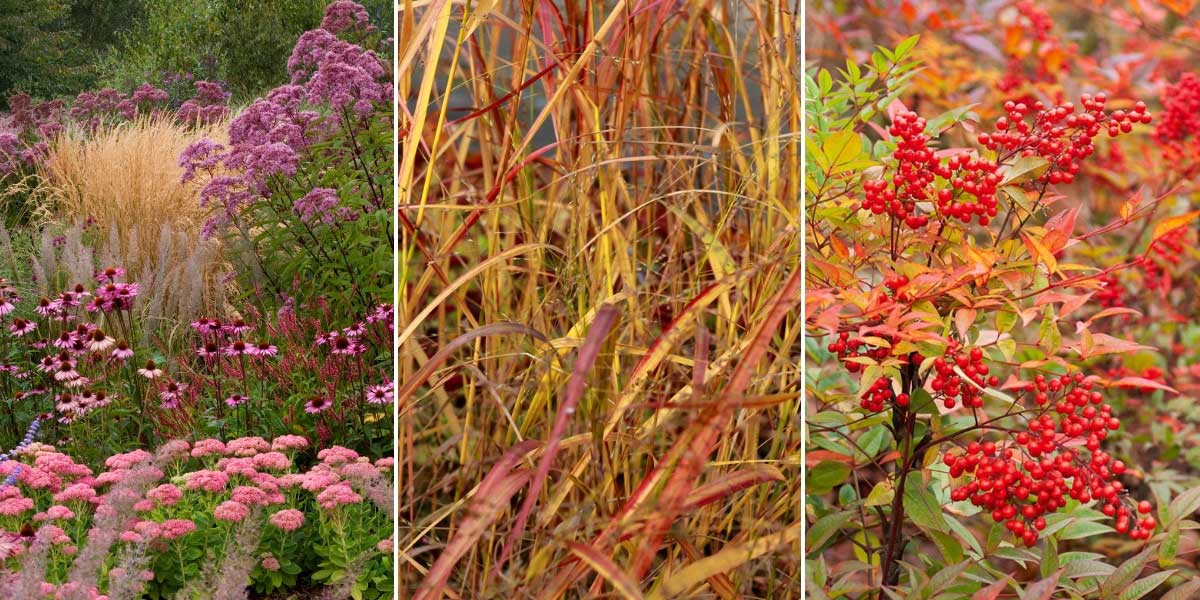
Panicums also make it easy to compose beautiful autumn borders in warm tones. Autumn scene with Sedum ‘Herbstfreude’, Echinacea purpurea and Eupatorium purpureum / Panicum virgatum (photo Sten Porse) / Nandina domestica
Did you know?
- Ecological interest
Thanks to its deep root system, Panicum helps improve soils by increasing their permeability, aerating them, and can also be used to stabilise slopes and limit erosion.
It could also be used to produce biofuels.
Moreover, as it is a plant that tolerates drought well, is rarely affected by diseases or pests, and can grow in poor soil, it is ideal for an ecological garden that is water-wise and economical in plant protection products and fertilisers.
Useful resources
- Discover our wide range of Panicum
- Find our selection of Panicum: best varieties and Buying guide: Choosing a Panicum
- An article by Ingrid on our blog – 10 grasses every garden should have
- An article by Pierre – Time to start pruning grasses!
- Our advice sheet on planting grasses
- Our advice sheet on pruning grasses
- An article by Michael – Grasses: those to prune, those to tidy
- Our advice sheet – Grasses: which variety to choose?
- Discover resilient grasses
- Discover 5 grasses with variegated foliage
Frequently asked questions
-
My Panicum's leaves have orange spots. Why?
Your plant is probably affected by rust, a fungal disease that can develop if growing conditions are particularly warm and humid. You can treat it using a horsetail decoction or a sulphur-based solution, both known to be antifungal. However, it is uncommon for Panicum to be affected by this disease, or by diseases in general.
- Subscribe!
- Contents
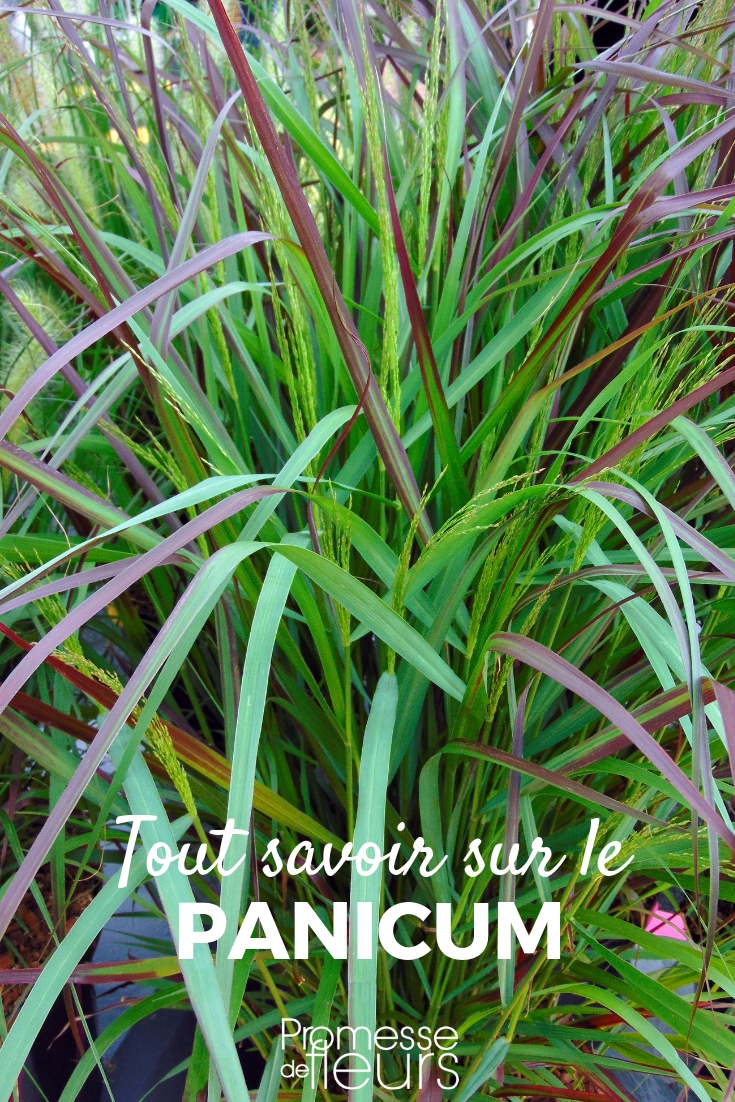
































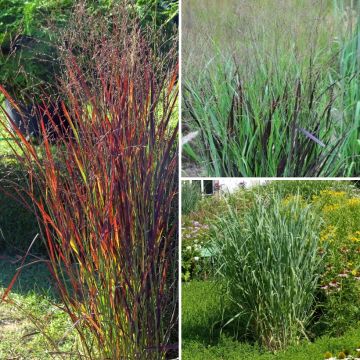




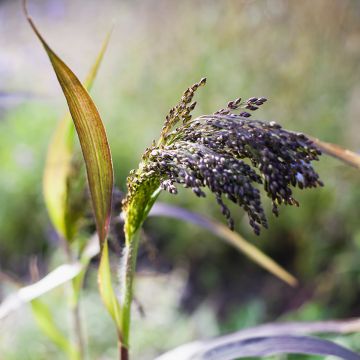



Comments